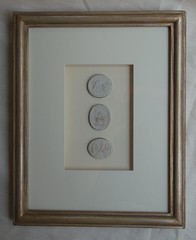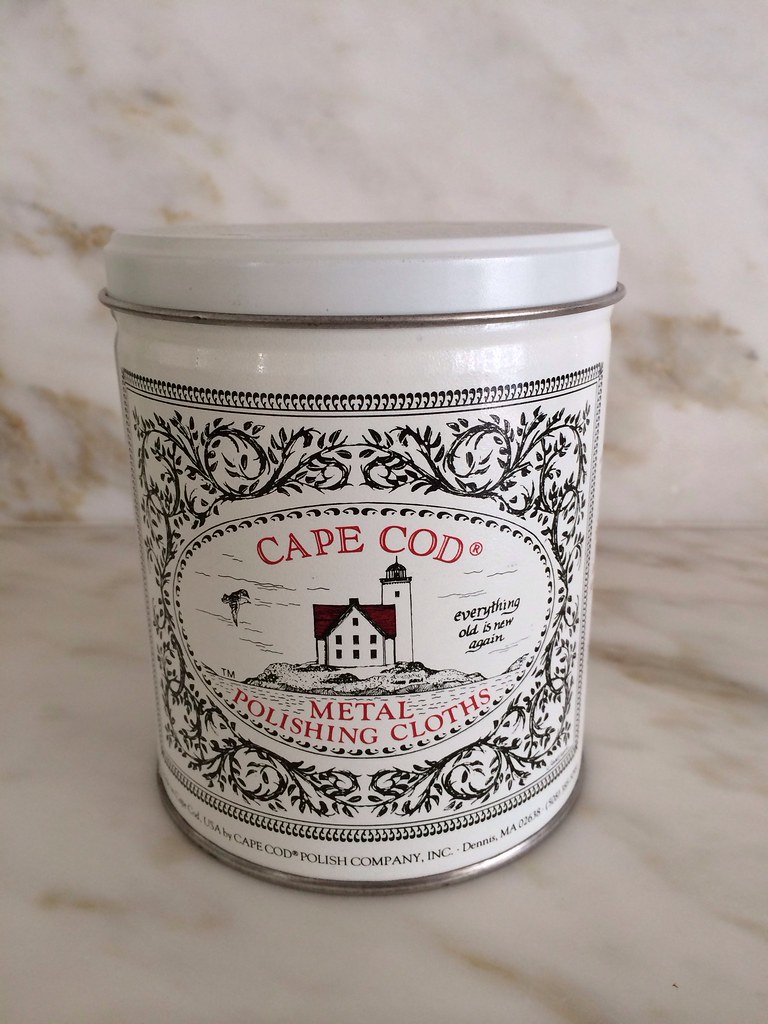Every year, Atlanta design aficionados eagerly anticipate the Atlanta Homes & Lifestyles Kitchen issue, which contains the winners of the annual kitchen design contest. The 2010 kitchen winners were were particularly spectacular; in the words of AH&L’s Kate Abney, “whether your style is traditional, modern or somewhere in between, this year’s kitchen winners prove that, above all, a pared-down approach prevails”. (Click here to see the 2010 winners).
One kitchen in particular caught my eye (seen above, with photography by Erica George Dines); the colors are serene, the design is beautiful, yet the kitchen also looks exceptionally well thought out and very functional. The article introduced me to a (new to me) Atlanta designer: Jo Rabaut of Rabaut Design Associates. The home's architecture is by William T. Baker and Associates, whose work I have featured numerous times on my blog.
Another picture of the kitchen – this time with the ‘hidden’ pantry doors open. One of Bill Baker's earlier designs showed the pantry doors on the left, in the area that is now the butler's pantry. Designer Jo Rabaut redesigned the pantry to be accessed from its current location, and the butler's pantry was outfitted with custom cabinetry to house the owners' collection of china and silver.
The new 'hidden' pantry is one of my favorite features of the kitchen; when closed, the doors look like cabinetry. When open, they cleverly mirror the size of the door opening to the butler's pantry, creating a lovely bit of symmetry. Note how the inside of the pantry is styled in this picture, from AH&L, photography by Erica George Dines.
Note how differently the kitchen is styled for the pictures that are part of Jo Rabaut’s portfolio (I am loving that cake), with photography by Chris Little. The pantry is much more filled in, and the Kitchenaid mixer is out on the counter, with a tea set ready for serving on the right.
Another view of the kitchen; the countertop on the island is made of soapstone. AH&L noted that the objective of the kitchen was to be understated, with no ‘statement pieces’ such as a prominent hood or dramatic chandelier. The kitchen is elegantly simple and retreating – all of the appliances are concealed behind cabinetry - which is perhaps why I like it so much! (Photo credit: Chris Little)
One of the most interesting features of the kitchen is the double trough sink – designed so that both sides of the kitchen can have access to a prep sink. I am curious why the faucets are installed on the edge of the island. Perhaps this is so the cook can prep to the right of the space and easily sweep the debris into the sink?
The main cleanup sink is under the window; this is where the dishwashers are located. Note how the island is painted in a similar color to the shade on the window. When House of Turquoise profiled this kitchen in January, she noted that the wall color is Sherwin Williams SW 6211 Rainwashed; this color was selected to coordinate with the color palette of the first floor of the house. (Photo credit: Erica George Dines for AH&L).
The laundry room, with its vintage style sink, is an airy space and also has the same Sherwin Williams rainwashed paint color on the walls. I love those drying racks! (Photo credit: Chris Little)
The Rabaut Design Associates had numerous photos of additional rooms in this beautiful house, which is was particularly gratifying as the house has the same peaceful and elegant feel. This is the living room; note the beautiful pointed Tudor arch shape of the door opening, a design element that is seen in the built in cabinetry that flanks the fireplace. The striking painting above the fireplace is by Kenson Pound, an Atlanta based artist who is represented by the Bennett Street Gallery. This room is a perfect case in point for the transformative effect that original art can have in a room. (Photo credit: Chris Little)
A close up shot of the room, this time with an upholstered bench in front of the fireplace. (Photo credit: Chris Little)
I always love a formal dining room that combines my favorite design elements, such as the custom colored DeGournay wallpaper and one of a kind chandelier, contrasted with the slipcovers with dressmaker details that gives the room a youthful touch. (Photo credit: Chris Little)
A bathroom this beautiful, with its spectacular mosaic tile floor, chandelier, and standalone tub, has got to be the master bathroom; this is actually 'her' bathroom, as the master is designed with his and hers bathrooms and closets. I have seen this floor at a local tile store, and the beauty is not only in the design, but also the variety of colors that enable it to coordinate with many different color schemes. (Photo credit: Chris Little)
The master bedroom is seen in this picture, with a small glimpse into 'his' bathroom (designed in richer, more masculine tones than 'her' bathroom, yet all beautifully coordinated with the colors in the master bedroom). (Photo credit: Chris Little)
The master bedroom has a tranquil seating area with its own fireplace, and built in bookcases. The bookcases have one of my favorite design elements: the back is painted to match the colors of the walls. Note the pointed Tudor arch in the bookcases, a repeated element that is found throughout the house. Neither the Atlanta Homes & Lifestyles article or the designer’s website contained an image of the exterior of the home; given the architectural details in the home, I imagined a classic Atlanta Tudor. (Photo credit: Chris Little)
It is rare to get a peek into the master closet, and this one does not disappoint with its statement chandelier and marble surfaced island cabinetry, and glass front closet doors. Just as there are separate his and hers bathrooms, there are also separate his and hers closets. This little jewel box of a room is 'her' closet. (Photo credit: Chris Little)
![4361382452_dcc057d46d_b[1] 4361382452_dcc057d46d_b[1]](https://blogger.googleusercontent.com/img/b/R29vZ2xl/AVvXsEhXCyUNw9FsZAiL7Vu-NDJeEzurnxyixG9KRmAl7s6cWRWTa8aNwa-rnhx3zUDfuCyLRzhNa1W_uapPyb8kxHVmP6CwZKEDH2WeY5ASHv8vxNk7Arg33wkyTXLUn7YVkLvypBEy0qcxpeY/?imgmax=800)
After a bit of investigation, and a connection made through the architectural designer of the home, Bill Baker (a friend of the blog), the homeowners graciously allowed me to complete the story with a picture of the exterior of this beautiful home. It was designed in the Tudor style that both the architect and the homeowners admire, and was strongly influenced by the golden days of 1920s architecture in Atlanta. The house was built in a neighborhood filled with charming old Atlanta homes, so care was taken to use techniques and craftmanship characteristic of older homes. Of particular note is the Flemish bond pattern in the bricks, which is the most decorative and beautiful of brick patterns, created by alternating the wide side and short side of the brick. Also of note are the lovely leaded windows, created with restoration glass in a pattern characteristic of Tudor style homes. Note how the door surround introduces the Tudor arch design found in doors and architectural elements throughout the home. Finally, the pattern in the limestone in the bay window above the front door was custom designed by Bill Baker based on historical references. (Photo by homeowner)
I hope you enjoyed this tour of another beautiful Atlanta home! It was an interesting way for me to experience a home – first through its kitchen, then its interiors, and finally through seeing the exterior. For more information on the designer, please visit Rabaut Design Associates - http://rabautdesign.com/; for more information on the home’s architectural design firm, please visit William T. Baker - http://www.wtbaker.com/
T
To see my latest blog post,
click here.
To subscribe to my blog by email, click here.
To follow my blog on Facebook, click here.
Twitter: @TTIBlog
Instagram: http://instagram.com/ttiblog
Pinterest: http://pinterest.com/ttiblog/
Visit my online store, Quatrefoil Design:
www.quatrefoildesign.bigcartel.com
To see design, architecture, art, and decorative books that I recommend, please visit the
Things That Inspire Amazon store.

Beautiful framed intaglios, available here:
Unique architectural renderings, available here:
Whimsical paintings, as seen in House Beautiful, available here:





![4450319507_9d55282d5c_o[1] 4450319507_9d55282d5c_o[1]](https://blogger.googleusercontent.com/img/b/R29vZ2xl/AVvXsEhu8DvOGirA0TZEJGwli2jdjZ51P870mbrjTUZbjO3UMJ4yCAXqtP5emLWuiC4YSzhAH35ZUGTrMNNE2Q6iJQ9y693bd16E9vm1Yf-Bf5X_O8sylyGBEoLTNTXk2KVurkKasWxIEQylxAk/?imgmax=800)
![3806[1] 3806[1]](https://blogger.googleusercontent.com/img/b/R29vZ2xl/AVvXsEhODIxScIsm75Gzo5luET0QGO7kqQUmvDSEsMgbMCaPDD8o6-Z_L07KYR8rPZ8WXRqR2o50EsdAokSr20qj6WMgzlcsnHfAgLIB3Z3PY98iD_Uw8R-RquHsNzup9xqKTkv3aktjYP8NjrU/?imgmax=800)
![3804[1] 3804[1]](https://blogger.googleusercontent.com/img/b/R29vZ2xl/AVvXsEgcvtidkUrhsohfc6Q-Q5bbzFaB4z7Lg47rovi8jxQfVAXVknqKrxCHMmxkLDhpeb0lhxcmCBgKEIgkEDY8qiQXavnyX5R_h6zEu7qp32HXQsS-3ADll9xv-XkZoCF2lRzNaSTDKXZpJuc/?imgmax=800)
![3803[1] 3803[1]](https://blogger.googleusercontent.com/img/b/R29vZ2xl/AVvXsEhhTCRGpXNuzjW-3MD1AKOpAmrGL9P3_eOwqqJsJVnwmGtgFqg7Et5PnDW4OwW0JgQTbzMs3nfKmETDF5JOZK0wvuSFVv9eb44oNGVtlx3I7lJazVeSsAtXFWyRHakN2hAs-NyHkwg7XzE/?imgmax=800)
![3801[1] 3801[1]](https://blogger.googleusercontent.com/img/b/R29vZ2xl/AVvXsEgbKCmakc0o1TcyEle6OHA4ZRCnYl9PiP70hXp0bf2SZkOSAjvHZiXKvKzwGyaeyVcmxXhmLFCfwsxcKdyrSusmHL91h63R0kyi3nytPh3Fgm5anWXngGXgVb2S0kNJ3iwcpK9W9GR4MEI/?imgmax=800)
![3802[1] 3802[1]](https://blogger.googleusercontent.com/img/b/R29vZ2xl/AVvXsEhsJpepaElHspJeyTLWtx968aDTKuR3jZOdRSbgTggc5QYey8yAAZkLlcJXE3mlNcmN_y5m1oTcukVrArYkT0KxN_a6_NIZFlQ5gICOcNGo4hooyiqNwHuHrOsMvMq3d4AD3naV1rhWnzU/?imgmax=800)
![3809[1] 3809[1]](https://blogger.googleusercontent.com/img/b/R29vZ2xl/AVvXsEjcMsiAZiB5ClcW_6omyUmP4LrafHsbA-5AzeKaJlBUozEM6vWlTNTzjOiYINM-H7kkdlJ5Gzxygqc56wMhnhjvTWbPS3Spjsf-JcDaG5WWZK7H2enwu_omodLRldpB6SlLVXAop-RkRwY/?imgmax=800)
![3808[1] 3808[1]](https://blogger.googleusercontent.com/img/b/R29vZ2xl/AVvXsEjAhCx3YNZdb-jYIjVfYoY567qCjxpQstfGqdCsS_avNAhmD2EbxtKZEwrxpNRaAzOutsgEoeEaVMDp3PQdtUgWuHj0blkICNCVkoUbrGRfZXgMTx_7aLUDeUcKQq1IsbF0lCRRwQV1k44/?imgmax=800)
![3805[1] 3805[1]](https://blogger.googleusercontent.com/img/b/R29vZ2xl/AVvXsEhTdcDS8IWZ7b3LOYV2SOLuJ_kTTjG-KVCs97MeLHFfz6gQ7bw15wGCsRtDjdLCre_iGz8Iu-xXSm-mdzSYGe7jHbKAlKzbQJivLMyrRQbWrmpKPzsUpvqqgEMTZ0Mg8lhvNjbbFjo9yhk/?imgmax=800)


![4296934303_a8069f714e_b[1] 4296934303_a8069f714e_b[1]](https://blogger.googleusercontent.com/img/b/R29vZ2xl/AVvXsEjlRnaxAem6rEjV-7Sm8uRxNmyKm3lBqkpneJX6WOwiK0t7BI-5N1LY5FRKjIdX_mwe3WiVyMPpCRSfXFInIxKq8UreqeDx0i3lRkcVXOcHVpfM6cfeXFe-ZG97Ouq4norZabg7VsPxLio/?imgmax=800)

![3693568023_7e583f1ede_b[1] 3693568023_7e583f1ede_b[1]](https://blogger.googleusercontent.com/img/b/R29vZ2xl/AVvXsEjhiUhXp1XH8dgGWbhq_Tvw0NX7Y4WRhxLZ15_ykbYIkbZ2Ug09NIKDI6sDD_NlE2ZiEDjwF5fehXtDeFphFrUNoWdAyTZ6AzWFdPTCF0Q9IuebcQxNvdDlsziMY5wi0Jdv0OsFZWgAmkw/?imgmax=800)
![Snap14[9][1] Snap14[9][1]](https://blogger.googleusercontent.com/img/b/R29vZ2xl/AVvXsEj_ducXDgF-us_dvoS4ZXnfm1QkZSi8oFiZylSRCsL4Zk6Vq7Vc-n7qlIdka1zHeD2vYDqHr4PNiPLm10hNJ4aoCh6wpqOz4IOMxGSg_3Znd79goqLfZRshWaIRSPs3tks24VQTPyHSAcI/?imgmax=800)
![Snap1%5B3%5D[1] Snap1%5B3%5D[1]](https://blogger.googleusercontent.com/img/b/R29vZ2xl/AVvXsEil1lEiJzw_qQQMD78GKYbOlUFlVyYozobd-zlVEYqfZVC_NWSBHm5l_4RX1F1y7QHBDRk9MacqQbHpHs46OFoVfUrytZZns7vAHEZrmobSNvYXchqmJzL9S7sKdx-XHm9Erjn9tSdNpM4/?imgmax=800)
![3510779257_44f0285493_b[1] 3510779257_44f0285493_b[1]](https://blogger.googleusercontent.com/img/b/R29vZ2xl/AVvXsEiTa0z-S_jPnGax4s8GuXJKJQEDdsP6ZPekESC9vJHgXfckaDhCMPVjmhoNor6cT-iTutX5JTQOA6sAHSaZWwDNddZMbW7V0FJUa2NoScv6qqzDDELxrC3Y3DfAetKmBS5MObtqM_vMSzM/?imgmax=800)
![4449466164_f9e85e58d9_b[1] 4449466164_f9e85e58d9_b[1]](https://blogger.googleusercontent.com/img/b/R29vZ2xl/AVvXsEjsxDjDzZbefwlZuT6NqadwjBw3ucNiRpP9WxvR3s0Wa5Asq6aI9CaiyhFRhv99OU0tWBuo_XFl2llvdbyF8B4ihMiafawwCwtxmklscwJbyVwY4awhyphenhyphenHFHprqPUhnb_4IeTpri0BTb8pE/?imgmax=800)
![4448852799_75a44edceb_o[1] 4448852799_75a44edceb_o[1]](https://blogger.googleusercontent.com/img/b/R29vZ2xl/AVvXsEiDtcyLaNKOCB3C2DwDuwTQnAOr75c0D1V868ZhEdE79PM3JxjqtbPjWnceoG8Opubvssk2BXnA4a6GLHAqfXhyphenhyphenZd7SVzdrPAF-pK02Wr0p5TcToLVuSl7V8DV0tP_QhDwdMFY-AbHUh4I/?imgmax=800)
![3102604462_d789106506_o[1] 3102604462_d789106506_o[1]](https://blogger.googleusercontent.com/img/b/R29vZ2xl/AVvXsEiXDB3X031F-gvartATbYT4VIwHgX_vVBgbDyugg_RWD_vLg4M0SMRzN8OX9BTu2u1zmX2G6FDfU24y19ZFiBPnwIMZ5V4STLupV-6HQx0Eko3zshCAH_R38fopqMwpFYXV6poNDybAtgU/?imgmax=800)
![king_road_exterior_001_thumb%5B1%5D[1] king_road_exterior_001_thumb%5B1%5D[1]](https://blogger.googleusercontent.com/img/b/R29vZ2xl/AVvXsEhbUKWsjxMSQMJqjFml1jVaW1pifqWsf5FmkArveNsa8a5KuM6H862zn9gujlZxaKYtvp9yJx0fW7Qge15bWOInA_e6GsTEPZ7rWl57I1lsSiTOb6LTFarju-yAtUn7Z7XGQaRDP-hw4qg/?imgmax=800)
![IMG_0324_thumb%5B1%5D[1] IMG_0324_thumb%5B1%5D[1]](https://blogger.googleusercontent.com/img/b/R29vZ2xl/AVvXsEh2Kz_y3c6Gob0Ic4Iz14cZy9_0uMQCTByhtMfNtGXQ6QiBh41XoVKU09nB0na2zs9P7Z9xPNB5QcT4mb9_kaexF50JtXkkmokGbJqhWSMZYZI6yw6GhToKbFHz9u-_pSpbN6ua4nCmPuk/?imgmax=800)
![4143632760_f149ef27c9_b[1] 4143632760_f149ef27c9_b[1]](https://blogger.googleusercontent.com/img/b/R29vZ2xl/AVvXsEjfZx-HF6i9zpTtShR4meGAhJqpjRQboPAmjNB5nJ1k6ANyIiQIStGiJUHU3uxdOYupds5Q1gHMUNzap8B6vjUJ1752jMyu1xAAK0ZTiTLdMaMUpPWyUyEEl3CTFkFPacHDaYPFLxCgGcY/?imgmax=800)

![4226704334_3e7c3b33a0_b[1] 4226704334_3e7c3b33a0_b[1]](https://blogger.googleusercontent.com/img/b/R29vZ2xl/AVvXsEhadEQ7357sR2Aci7Kpz9KbmNlr0aLKUPYI92qTfXGTQ0-M2tjTYtgG8F7Vn_u2N3FbYyGSBXMOVNfxwRlmd8o9piADZz0dh2_H_hapip1zAIgLD99Optd_MOmzWL6tUtg01IUUW_x_er4/?imgmax=800)


![4326337401_e0fbb42c64_b[1] 4326337401_e0fbb42c64_b[1]](https://blogger.googleusercontent.com/img/b/R29vZ2xl/AVvXsEgOo8G8KJydqbpKNZJVaie_BhIyxnWEm1Z1VMn4kp9CiZEJ9xQ5ty6WIN0k1fjGKgfb3EW5A14Plwxt9rpZEwsFyzArMsUnU7IkV_y9kegtHVpjWYiuPPr7n6Bvm91YPeX7fAIO9FuMJSw/?imgmax=800)
![4120674602_36ba0001cb_b[1] 4120674602_36ba0001cb_b[1]](https://blogger.googleusercontent.com/img/b/R29vZ2xl/AVvXsEg5xWl9IJlPKrWo3dDUA1bpjM55uqOCgBuLX1OWH-yTpwg-teiwX44TUgMmSC5QUvSbTYDxfwy0N9LlZgIz9gEPAjiG6DezguQkPEQGKlqFghNQlF7wBEhg2HJ_oRV3SqlLnqpZDfnkYS8/?imgmax=800)
![3498544316_615890e116_o[1] 3498544316_615890e116_o[1]](https://blogger.googleusercontent.com/img/b/R29vZ2xl/AVvXsEgpJrJrlGLLybPRGqsXEnCGgqN1lD5E_LSpc6Y3gui9s1FUO9aixra2FfStwtrX8sg1518DidRn_lPVIB_2usFRj2j97wa0oAVNYIpF34P8TC3nQGCbnN3pzHS4ok9kMkub1YyVw0C9bgk/?imgmax=800)
![neel%2Breid%2Bmarch_01_04[1] neel%2Breid%2Bmarch_01_04[1]](https://blogger.googleusercontent.com/img/b/R29vZ2xl/AVvXsEjDwyBljqzbb0jTTBihH_GlsbgP-yVxaay8ESh0r1hRImG7ubwajJCb55ABxQYMCp1rbpr-dOMJQt5BpGir9nVTVnN41eRvakTUS09qunvkvh7Qvy_ZT5RCbsaJg3QCksHml_oQLViQTkI/?imgmax=800)











![091103_EGDines_KitchenWinners_05[1] 091103_EGDines_KitchenWinners_05[1]](https://blogger.googleusercontent.com/img/b/R29vZ2xl/AVvXsEh20mQNfOiZzsxL7D2GvMyai8xu-0rfE3-XLGfY9udEA0mbrydKtKXuHsX8ZpMgsBiAju734gtesprXqnwmeEC10f0yQ2G7sor6X5stTB6nhaMtjYEStmQTSsu-6QJjSOHETla1aW9s76U/?imgmax=800)
![091103_EGDines_KitchenWinners_07[1] 091103_EGDines_KitchenWinners_07[1]](https://blogger.googleusercontent.com/img/b/R29vZ2xl/AVvXsEhUr5B04xPI1-1Myk5GMtbXHA0KydQXbXQKnMkc-xDaCx7WgdzEgW5ArbtBtkfckHIS1DudG1D0wTKmTD9ozjSl2IK8XFJkAM78YuUTc8KOaJAyqznyX7Rf9jJWEWinGk5jXd-hbY46NpI/?imgmax=800)
![4359768223_3a5f51ca5e_o[1] 4359768223_3a5f51ca5e_o[1]](https://blogger.googleusercontent.com/img/b/R29vZ2xl/AVvXsEjnEEeZPYxqsPod7VaJTJnM3HSNJBiWiprUVSlNrG1fpl0e3_Q-8pdailW2uDN3X8hwHULMO-hCzeV7afnlSEU244XNe4j2As5XnohNDf6iRm-pzI8_PZRHWuCJCuEfxMxorwtPu5bA47k/?imgmax=800)
![4360508536_75285e4d63_o[1] 4360508536_75285e4d63_o[1]](https://blogger.googleusercontent.com/img/b/R29vZ2xl/AVvXsEgVfzFElEDEqo0VDlUJwvKWRMvJAH5NNdWZM2N_7hYsiksRJVMqrgwhkcb1V0aD6HgUb6ISOMNUkNBFhVbBclU7Ed7PPpExx4VgpXOxIPt4Gqgp_9ZeOGF-T83oz4cmwKP3ADtW4Ijvxh0/?imgmax=800)
![091103_EGDines_KitchenWinners_06[1] 091103_EGDines_KitchenWinners_06[1]](https://blogger.googleusercontent.com/img/b/R29vZ2xl/AVvXsEhM_Cg39Zt4gvghSuPwMlp3th1KDTGGv-61rem9m26vu7Ao1InlHSRavoJFDZIdwrYZHtg6Ejxpbr_v3oUib1benutZVIHk5JF6zg393ddRW_MsX_6EiKjFU015R3hyphenhyphen0WUOfETk2pvMgeI/?imgmax=800)
![4360510742_b2f0aa388b_o[1] 4360510742_b2f0aa388b_o[1]](https://blogger.googleusercontent.com/img/b/R29vZ2xl/AVvXsEhbwOAuyIJ8alyoa2cQyJQ5ygqCHRapoksjJmU3x_ynjh7Q0qiFKl432AmlSw-MGh3zFzQ0p76FLK5ShYAevpEj42ITmrcLhbpSXlnw_3UZt1V8tc_IhNiWyjmZXopvOtGENcBoR4GEmO0/?imgmax=800)
![4359766327_d37b27a76c_o[1] 4359766327_d37b27a76c_o[1]](https://blogger.googleusercontent.com/img/b/R29vZ2xl/AVvXsEgghLS2JMcFkdWNf4J7yxaIY_TUXLaIbFU07H6DO4Yo1NoMdg7C7B72gjaJhDhxLrYXjJoHXB2UlnbVE8WuZhyphenhyphenYh2IDlNoyCSKh0Ak7RgJC-pigQamm4Ed18EZz16nwFOv375IhHs5wQ44/?imgmax=800)

![4359767147_2636661ddd_o[1] 4359767147_2636661ddd_o[1]](https://blogger.googleusercontent.com/img/b/R29vZ2xl/AVvXsEia3bKFXIEj0SVCNVNvxxeRTXocwgdNtwUKKr_qOk19OxvS1hn0rwkFvhJpraUJSlxSmCMXhX6df-Lh2bQJRRUE8tltZA_g6ae3MKXzyewNfPi6kyBj8Sg0PFsljhebldn9pytkxkDZXfk/?imgmax=800)
![4360509652_86f9de5f36_o[1] 4360509652_86f9de5f36_o[1]](https://blogger.googleusercontent.com/img/b/R29vZ2xl/AVvXsEiGqk_yuVtSbLLCVipEaJ_52MsPNoxsljSZon757M0uu9cP16X_Gky-J4eO8kDPR82rTTfYWw57-ld9ajl1CEnWQfwTieFe63bk2r9deNxTHfxUcdlR_fUOg00UBrggNh6VljIUYIGllUA/?imgmax=800)
![4360510044_be5d5e2a87_o[1] 4360510044_be5d5e2a87_o[1]](https://blogger.googleusercontent.com/img/b/R29vZ2xl/AVvXsEj7N6fsbNIFN9ZKYYidM_4SOkgEvuTaHyCvqEjv24Z6a0aem504TtRSbknKNZ91KSr9B3A1aybu7BVfNgWc1qdtO5d-pRvDTGPD7Y_2bH_QeE0gC0fBVUDr0T642QjVFzhAYtOfJsblmjM/?imgmax=800)
![4360510444_862f3d505d_o[1] 4360510444_862f3d505d_o[1]](https://blogger.googleusercontent.com/img/b/R29vZ2xl/AVvXsEh-Tmi9kqnfSaX2I05TbwP1hTtvEPLGtlvAFCaZH9y8jBXXms-DZUP68Tp7SYvyQYHF2HHs7IPopG1vjIc-yfNN93G219huqmb69o1T72ee4_rOSE8KprH_V3wdZi7F39hvtDq90LkvtHc/?imgmax=800)
![4360509258_680a715125_o[1] 4360509258_680a715125_o[1]](https://blogger.googleusercontent.com/img/b/R29vZ2xl/AVvXsEiQa0zWzyS1zoXW6IDPqHTA_VlkdwmaVzrvL2oV7dbG_2Rw9sU_VEaBoO_MXhdxxFWPKe82ralbiRUy7yoilI4x76Tf5Y5ZtiFvwrP1EXBA7iyYt17Xx6rwUbrMLDcdMofIcmmuw1tRyuc/?imgmax=800)
![4361382452_dcc057d46d_b[1] 4361382452_dcc057d46d_b[1]](https://blogger.googleusercontent.com/img/b/R29vZ2xl/AVvXsEhXCyUNw9FsZAiL7Vu-NDJeEzurnxyixG9KRmAl7s6cWRWTa8aNwa-rnhx3zUDfuCyLRzhNa1W_uapPyb8kxHVmP6CwZKEDH2WeY5ASHv8vxNk7Arg33wkyTXLUn7YVkLvypBEy0qcxpeY/?imgmax=800)














































































